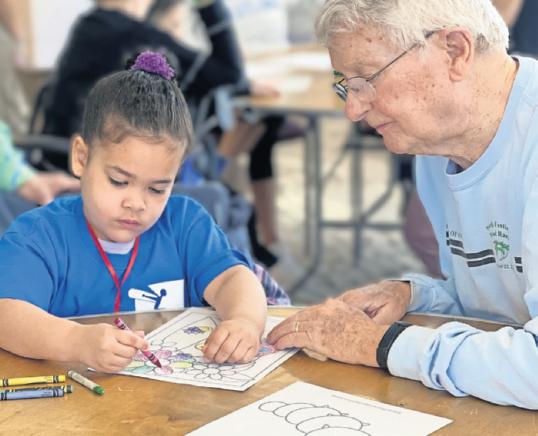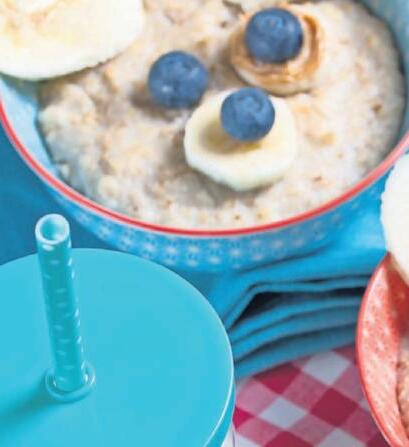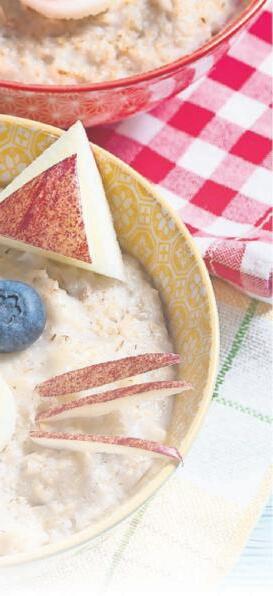Better Health





HEALTH: Ways to relieve social anxiety, D9
READING: Books to fill the rest of summer, D9
HOLIDAYS: A place where it snows all summer, D9

By Staasi H eropoulos Special To The Republican
On any given day, residents at the Glenmeadow retirement living community in Longmeadow might be decorating cookies with children, getting help with their smart phone from a high school whiz kid or recalling their past by reflecting on life with a teenager.
Intergenerational programming at Glenmeadow brings the community’s 160 residents together with local school children, high school honor students and occupational therapy students from local colleges—and whether its icing a treat, downloading an update to their mobile phone or learning how to stretch their muscles and minds—generations are coming together to inspire each other.
“It’s a wonderful opportunity for our residents to spend time with children and young adults, which brings to mind their grandchildren or great grandchildren, not all of whom are nearby and can visit,” said Dr. Kathy Martin, president and chief executive officer at Glenmeadow. “We have a high percentage of our population who are retired teachers, so it brings them back to their vocation. An added benefit is that it is a way to combat social isolation.” It might be difficult to imagine feeling isolated at an independent and assisted living community where residents attend a robust schedule of daily activities, presentations and events, while also dining together in the evening. But with all of that going on, some still feel much of life is out of bounds.
“There can be an insular component to living in a community and it’s important for us to create opportunities for our residents to interact with age groups they don’t see on a daily basis,” said Martin. “Intergenerational programming is about fun and joy more than
anything else. Our residents learn about one another and the young people who come and spend time with them.”
“For some of our residents, who have advanced medical conditions or different levels of infirmity, the tendency can be to stay in their apartments. But residents, who have historically been more likely to do that, are now joining activities because it’s interacting
Age.” What do you do after you retire from work? What do you do after your kids have left the home? For many, this is a time of reinvention,” said Martin.
Seniors planning the next phase of their lives may want to be entrepreneurs, community volunteers or benefactors. While no one will be leaping tall buildings, they may want to scale mountains
residents who ‘want to’ do something, learn ‘how to’ get it done.
“Many of our residents are well connected in the community. Our staff is well connected. If there is a resident who wants to start a business, or hike the Appalachian Trail, we can help connect them with people who can assist them. We consider ourselves prompters, but we can also
is launching the community’s “Age of Excellence Awards.”
“This is an opportunity to celebrate the accomplishments of those in our region, who are over 60, and who are redefining what it means to get older,” she said.
Glenmeadow has received 33 nominations—three for residents of the senior living community itself—and is announcing honorees in
“It’s a wonderful opportunity for our residents to spend time with children and young adults, which brings to mind their grandchildren or great grandchildren, not all of whom are nearby and can visit.”
- Dr. Kathy Martin, president and chief executive officer at Glenmeadow

with students, and they look forward to it. It gets them out of their apartments.”
Entering their Third Age
The average age of residents at Glenmeadow is in the mid 80s. Some are in their 70’s while others are centenarians. No matter the number, they are all entering another, creative and meaningful phase of their lives—the Third Age.
“We are creating an opportunity for seniors to start what is being called their ‘Third
and go hiking.
“It’s a time where we move away from that compulsion of just doing, and we start thinking about, how do we want to contribute? It’s a way for seniors to reframe their role in the world and take on something new,” said Martin. “There’s a sense of ownership and self-determination in the Third Age.”
Any new venture, or adventure, begins with desire but quickly pivots to fueling the fire. Glenmeadow is helping

be connectors,” said Martin. “The more we make resources available for our residents to try new things, and engage with different people, the better their experience here will be.”
Numbers don’t matter
It’s been said, ‘Age is just a number,’ and that mantra is being shouted from the hilltops by the community’s new CEO. Martin joined Glenmeadow a year ago, and one of her key accomplishments
August. They will be celebrated at an event in September.
“We’re honoring people who are showing us age is just a number,” said Martin.
Age of Excellence cast a broad net and is identifying people who are selfless, and self-fulfilling. The nominees are people who have immersed themselves in community service, working to raise money for local non-profit organizations and helping others who are “managing difficult life cir-
cumstances.” Other notables are moving into new careers or are highly accomplished professionally.
“People are doing great things, and we want to highlight the accomplishments and inspiration of those who are over 60 and who are legends in their own right,” said Martin. “We want to create the opportunity to highlight a group that sometimes exists in the shadows, and we have so many great people in our area.”
Life in the roarin’ 60s
While residents are mostly older than 70, the community is attracting a younger crowd as well by offering them a platform to clear their minds and schedules. They are people not ready to retire and who have strong, ongoing ambitions. Martin wants to help people focus on what drives them, and not to be driven by what hounds them.
“We are interested in welcoming those on the younger end of the continuum to our community. The assumption is, you must have a certain level of sickness or infirmity to move into Glenmeadow— we do sensitively embrace and care for those people. But there are great advantages to being here as a young, healthy senior—the opportunity to shed life’s overhead so you don’t have to worry about who’s cooking dinner, home maintenance or shoveling the driveway when it snows,” said Martin.
“It creates space to focus on what’s really important to them,” she continued. “It’s less about forcing yourself into a decision down the road, and more about being proactive—making decisions now that will make the next part of your journey much easier, because you are already part of a community that can support you.”



Fun in the sun is a big part of the appeal of summer. Outdoor recreation and relaxation kicks up a notch each summer, contributing to a vibe that is as welcoming as it is warm. Summer is indeed all about recreation, but individuals also must remain safe when spending time outdoors. Heatstroke is a potentially deadly condition that can be prevented with some basic knowledge of what it is and how it manifests.
What is heatstroke?
The Mayo Clinic notes that heatstroke is caused by the body overheating. When individuals suffer heatstroke, it is usually because they have been exposed to high temperatures for long periods of time or have been physically exerting themselves in such conditions.
How serious is heatstroke?
The medical examiner’s office in Maricopa County, Arizona noted that heat deaths surged by 50 percent in the city of Phoenix in 2023. Rising temperatures related to climate change have made it less safe to be outdoors on certain days. The risk for heat-related death is serious in places like Phoenix when the mercury rises, but anyone anywhere can succumb to the heat if they are not careful. By no means are deaths due to
heatstroke or other heat-related illnesses exclusive to individuals in traditionally warm locales like Phoenix. Despite that vulnerability, various organizations, including the Centers for Disease Control and Prevention, note that heat-related illnesses are preventable. Prevention involves recognition of symptoms prior to going outdoors and a willingness to go inside should any symptoms begin to arise.
Heatstroke can manifest in various ways, producing symptoms that may include:
Elevated body temperature:
The Mayo Clinic notes that a core body temperature of 104 F or higher is a main sign of heatstroke.
Altered mental state:
Someone suffering from heatstroke may begin to feel confused, agitated, irritable, and/or delirious. In addition, such individuals may begin to behave erratically, which can involve slurred speech.
Changes in sweating patterns: People may begin to sweat differently depending on why they are suffering from heatstroke. When heatstroke is brought on by hot weather, a person’s skin will feel hot and dry to the touch, notably leading to a lack of sweat. When heatstroke occurs because of strenuous exercise in hot
weather, the skin may feel dry and slightly moist.
Nausea and vomiting:
Heatstroke can make people feel sick to their stomach and even induce vomiting.
Flushed skin:
This recognizable symptom is marked by skin turning red as body temperature spikes.
Changes in breathing:
Heatstroke can cause rapid, shallow breathing.
Elevated heart rate:
The Harvard Medical School notes that the heart experiences stress when the human body sheds heat. That stress can cause the heart to beat faster and pump harder.
Headache:
Some people with heatstroke experience a throbbing headache.
The CDC notes that drinking plenty of water, cooling off in air conditioned rooms, limiting time outdoors on particularly hot days, taking frequent breaks if you must be outside, and wearing light-colored, loose-fitting clothing and sunscreen with a sun protection factor (SPF) of 15 or higher are some ways to beat the heat and avoid heatstroke.
Heatstroke is a notable, yet preventable threat. Making an effort to avoid heatstroke while spending time outdoors this summer can ensure the season is safe and fun.









According to pediatric dietitian Hanna Leikin, MS, RD, CSP, LD, kids need a higher calorie demand per body weight compared to adults to support bone development, muscle growth and other bodily functions. Perhaps that’s why it seems like a stocked refrigerator or pantry can become barren in just a few days when kids are in the house.
Children are frequently looking for snacks between meals, which means that parents need to have a variety of snack foods at the ready for their youngsters. But it can be a struggle to find healthy snacks children will eat. With that in mind, parents can consider these eight healthy alternatives to less nutritional fare like chips or sugary treats.
Fruit on a stick:
It seems any food enjoyed on a stick is fun to eat. This is certainly an item for older kids, as parents won’t want to worry about younger children getting injured with the pointy wooden skewers. Simply slide a variety of chopped or sliced fruit onto the skewers and make a healthy, colorful snack. For an added bonus, include a small cup of low-fat vanilla yogurt for a fruit dip.
Baby carrots and hummus:
Who can resist baby carrots? After all, they seem tailor-made for kids’ small fingers. Pair with a homemade or store-bought hummus, which is full of protein and fiber. You can even find dessert hummus, which may prove particularly appealing to children’s palates.
Crackers and cheese: Choose whole-grain crackers and a low-fat cheese. This provides the crunch of chips without the fat and calories. In addition, cheese adds protein and the benefits of calcium and other nutrients found in dairy.
Nut butters and pretzels:
Kids need unsaturated fats to spur brain growth and overall development. Nuts and nut butters offer these good fats.
The National Institute of Allergy and Infectious Diseases says peanut butter can be given to kids as young as four months old, and that early exposure may prevent peanut allergies. Additional nut butters include almond and cashew. Let kids dip pretzels into the nut butter for a filling snack.
Overnight oats creations:
Let kids take part in building jars or containers of overnight oats with their favorite ingredients. When old fashioned rolled oats are mixed with low-fat milk (or dairy

alternatives), raisins, granola, fresh fruit, chia seeds, and even low-fat yogurt and left to sit overnight, the result is a spoonable treat that’s ideal for meals and snacks. Plus the fiber in oatmeal will help keep children feeling fuller longer.
Frozen smoothie bowl:
This is a great alternative to ice cream. Simply blend your child’s favorite frozen fruits (and toss in a few veggies) with low-fat Greek yogurt. Serve in a bowl with toppings like granola, finely chopped nuts or coconut flakes.
Energy balls or bars:
Mix dates, nuts, seeds, and rolled oats and press into bar shapes or roll into bite-sized balls when kids need a sweet and energizing snack.
Turkey and cheese roll-ups:
Ensure that kids are getting enough protein by offering a lean protein source like sliced turkey. Roll up a slice of turkey or sliced chicken breast around a cheese stick for a portable and fun snack. Healthy snacks for children are easier to dream up than one may think. It can take children several times of seeing a new food on his or her plate before being inclined to try it, so parents should stay the course with healthy snacks even if kids are initially reluctant to try them.






The start of a new school year often means shopping for supplies, making new friends and getting acclimated to the teaching styles of new teachers. Unfortunately, a new school year also can mean head lice.


The Centers for Disease Control and Prevention says there is no precise data regarding how many people get head lice each year. However, an estimated six to 12 million infestations occur each year in the United States among children between the ages of three and 11.
What is head lice?
The Minnesota Department of Health says a head louse is an insect that can infest people. Lice make their homes in human hair and feed on blood. Head lice multiply rapidly by laying small, gray-colored, oval-shaped eggs known as nits. The nits are sticky and attach to the base of the hair close to the scalp. Unlike other blood-sucking insects, such as mosquitoes or ticks, head lice are not known to spread disease.
Who gets head lice?
Head lice do not discriminate when they choose a person. They are equal opportunity feeders and will hop on just about any scalp for a meal. Head lice are not indicative of a lack of hygiene.
The CDC says infestation with head lice is most common among preschool- and elementary school-aged children and members of their household, including caretakers.
What are the signs of head lice?
Itching is the most common symptom of head lice, says the Mayo Clinic. A louse bite causes an allergic reaction. Itchiness may occur on the
scalp, neck and ears. During visual inspections of the hair and scalp, one may be able to see lice and nits. However, both the eggs and the lice themselves are very small, so it can be challenging to spot them.
Parents and caregivers who suspect a child has lice should consult with a school nurse or a pediatrician. Studies show that many children are treated for head lice with home remedies or nonprescription medications when they didn’t even have lice. Dandruff, residue from hair products, scabs, or even dirt can be mistaken for lice.
sion through shared brushes, combs, towels, hats, and clothing is less common, it is still possible, so sharing of these items should be discouraged.
of developing the condition.


The AHA notes that people who have one or more of the following conditions are typically at higher risk for AFib.
Age
Aging individuals recognize that link, and many take steps to protect their heart health, which may include changing their diets or exercising with greater frequency.
Recognizing certain threats to heart health is another important step individuals of all ages can take as they seek to live long, healthy lives. One such threat is atrial fibrillation, which is often referred to as “AFib.” Johns Hopkins medicine notes AFib is a type of abnormal heartbeat caused by extremely fast and irregular beats from the upper chambers of the heart. Johns Hopkins notes a person with AFib may have a heart that beats more than 400 times per minute, which is caused by faulty electrical signals that make the atria (the two upper chambers of the heart) contract much faster than normal.
Age is a significant risk factor for AFib. Johns Hopkins notes that adults older than 50 are at elevated risk for AFib. In addition, the AHA reports that medical researchers suspect the number of AFib cases will rise considerably in the coming years as people are living longer. Recognition of age as a significant risk factor for AFib might compel more individuals to take additional risk factors for the condition more seriously.
which blood supplies to the heart are suddenly blocked; and a history of heart attack are just some of the heart conditions that increase a person’s risk for AFib. Anyone with a personal or family history of these and other heart conditions is urged to discuss AFib with their physicians.
Alcohol consumption
Binge drinking increases risk for AFib, according to the AHA. The organization defines binge drinking as five drinks in two hours for men and four drinks in two hours for women. If individuals want to consume alcohol, Johns Hopkins emphasizes the need for moderate consumption, which is defined as one drink or less per day for women or two drinks or fewer per day for men.
Activity levels
- Join the Glenmeadow community and discover
- Find your home at Glenmeadow and discover why
- Enjoy a fulfilling retirement with access to a warm and welcoming
The CDC says using a hot water cycle in the laundry and the high heat drying cycle can kill head lice on clothing and other items. Seal items that cannot be washed in a plastic bag and store them for two weeks.
Contact us today to learn more.
How can head lice be prevented?
The AHA reports that longstanding, uncontrolled high blood pressure can increase a person’s risk for AFib. This link between AFib and high blood pressure underscores the need for annual health examinations, which often uncover the condition known as “the silent killer” due to the fact that it does not necessarily produce noticeable symptoms.
Existing heart conditions
fitness classes, chef-inspired meals, spacious floor plans, personalized
- Request a private tour today! We are eager to show you firsthand the vibrant
The most common way to contract head lice is through head-to-head contact. Children should avoid head contact during play and other activities at school and home. Although transmis-
Vacuum the floor and furniture to remove any nits or lice that have fallen off the head. Fumigant sprays or fogs, which can be toxic if inhaled, are not necessary to control head lice, indicates the CDC.
A new school year may compel families to think about lice. Although lice is a nuisance, infestations can be treated.
The American Heart Association reports that AFib increases the risk of heart-related death and stroke. But individuals may be curious about their risk for AFib. Though some of the risks for AFib, such as family history, may be beyond an individual’s control, others can be managed with the goal of reducing the likelihood
Heart valve problems; hypertrophic cardiomyopathy, which is marked by a thickening of the walls of the heart chamber; acute coronary
activities, and exceptional care that sets us apart.
Though physical activity is an essential component of a healthy lifestyle, the AHA notes that AFib is common in athletes. The condition can be triggered by a rapid heart rate known as a supraventricular tachycardia, which can be a byproduct of exercise. AFib can pose a serious threat to individuals from all walks of life. Recognition of that threat and how to reduce AFib risk can be part of anyone’s long-term health regimen.





















